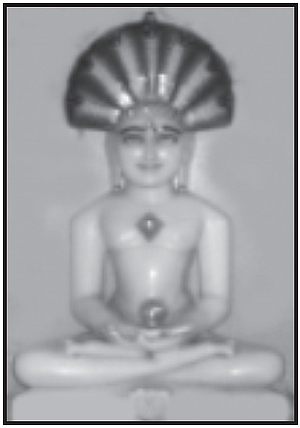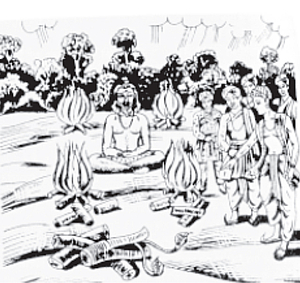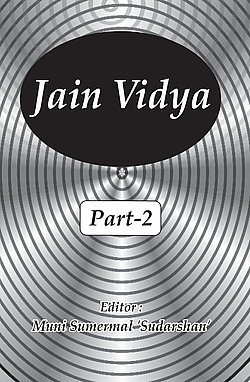Lord Parshvanath was the 23rd tirthankar of the Jain tradition. He was born in Varanasi. His father's name was Ashvasena and mother's name was Vamadevi.

In the 8th century BC, hathayoga ruled the roots in every part of India. Arrogance instead of dharma had created a deep impact on the Indian psyche. The people were carried away by the external ostentation leaving the real dharma behind. It was in those very days that a sadhu was undergoing panchangni tapa (On Meditating amidst five sided fire) in a garden outside Varanasi. Wandering about prince Parshvanath arrived there and saw a huge crowd that had assembled there to witness panchagni tapa. With the help of his clairvoyance, he saw that a couple of snakes- one male and the other female-were burning with in a hole of the burning log. Warning them the prince asked the people and the sadhu to stop this form of violent penance. He challenged the gathering if we could call it a tapa (perance), when snakes were being burnt. As soon as that sadhu heard these words of the prince, he was alarmed and got angry with the prince. Being ordered by the prince his attendants tore apart that log of wood and found the semi-burnt couple of snakes inside. The prince bowed before them and recited navkar mantra. He preached the couple to remain calm and equanimous. They accepted the preaching of the prince from the core of their hearts with righteous feelings and breathed their last. Both were born in heaven as the supreme leaders of Asurkumar Deva and were known as Dharanendra and Padmavati. Praising the prince all the way, the people who had gathered to witness the spectacle returned home. The sadhu was indignant in his heart but it was of no avail. The people also lost faith in such nescient rituals. After sometime the prince got permission from his parents and became a nigranth (an ascetic free from passions). He got transformed into a monk.
Once when he was standing absorbed in meditation in ahichhatra forest, a deva (god) who had cultivated a feeling of enmity towards Lord Parhsva during his previous life passed through that part of the sky. As soon as he saw him feeling of enmity was awakened. He subjected the meditating Lord Parshvanath to several forms of calamities. He caused a heavy rain of the pieces of stone pebbles on him but he remained calm and unruffled. Enraged by his failure to provoke him, he created torrential rains. Heart rendering thundering began to resound. In a few moments the whole area was filled with water. Lord Parshvanatth started drowning. The level of the water rose up to his neck.
In heaven, Dharanendra and Padmavati saw with the power of their clairvoyant knowledge that a wicked deva was causing distress to the beneficial Lord Parshvanath. Both of them descended down and protected the Lord by providing a shield of their hood. Thus they succeeded in putting an end to Lord Parshva's suffering. The Lord attained omniscience at that very time. He founded the four-fold path and propagated the message of ahimsa and truth. Millions of people listened to his immortal words and joined his Sangha to cross the ocean of samsara.
Lord Parshvanath moved about mostly in the states of Bihar, Kuru, Kaushal, Kashi, Avanti, Anga, Bang, Kalinga, Panchal, Magadh, Vidarbha, Dadharn, Karnataka and Kashmir etc. After having attained the age of 100 years, he climbed mount Sameda and sharavan shukla saptami. Even today Sameda shikhar (in Bihar) is called Parshvanath hill.

Questions:
- Why did Prince Parshvanath ask the sadhu engaged in penance to abandon it?
- What did the prince do after the pair of semiburnt snakes was found in the hollow wooden log?
- What was the total age of Lord Parshva and which places did he visited?
